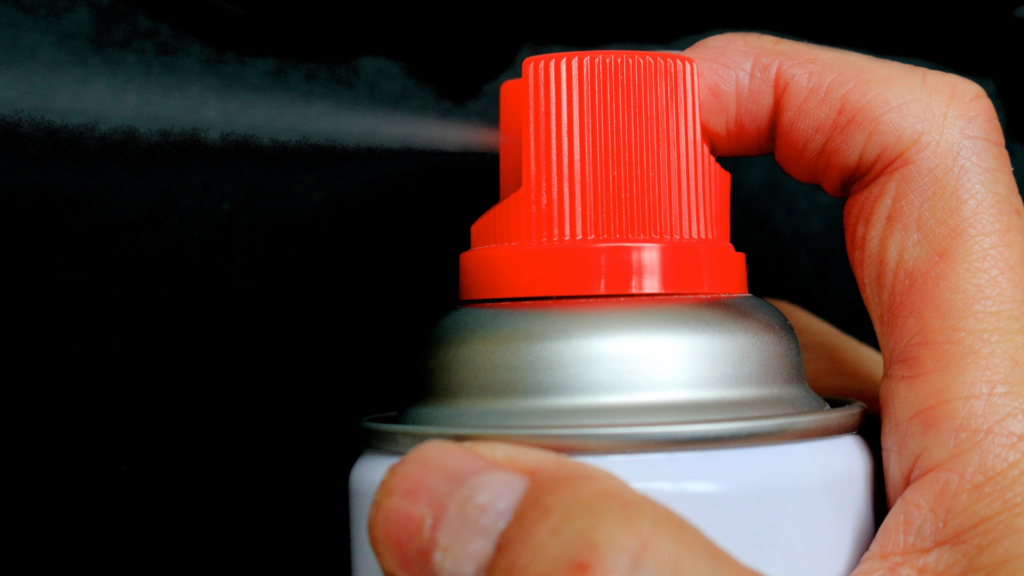Mayday! Mayflies Taking Over Your Precious Home? Here’s What You Need to Do



It's that time of year again when the weather warms up, and the days get longer, making it the perfect season for outdoor activities. Unfortunately, it's also the time when many homeowners are facing an unwanted invasion by pesky insects known as mayflies. These harmless insects may be harmless, but they can quickly become a nuisance, especially when they start to take over your home. If you're dealing with a mayfly infestation, don't panic! In this blog post, we'll share some effective tips and tricks for getting rid of these annoying bugs for good, so you can enjoy a bug-free home and get back to enjoying the warm weather without any interruptions.
Why Are Mayflies Drawn to Light Sources?
If you've ever had a swarm of mayflies buzzing around your light fixtures, you may have wondered why these insects seem to be so attracted to artificial light sources. The answer lies in their natural behavior and evolutionary history. In this section, we'll explore the reasons why mayflies are drawn to light sources and the scientific explanations behind this phenomenon. Understanding the underlying reasons for mayflies' behavior can help you take the necessary steps to prevent and control their infestations in your home. So, let's dive in and uncover the secrets behind this fascinating yet frustrating aspect of mayfly behavior.

Natural Tendancies
Mayflies are naturally attracted to light sources due to their natural tendencies. These insects are diurnal, meaning that they are active during the day and rest at night. During the day, mayflies typically seek out shaded areas to avoid direct sunlight, as exposure to high levels of UV radiation can be harmful to their delicate bodies. As the sun sets, they instinctively navigate towards sources of light, such as the moon and stars, to help them navigate their surroundings and find suitable resting spots.
When artificial light sources, such as lamps or streetlights, are introduced into their environment, mayflies are often lured towards them, mistaking them for natural light sources. Once they are drawn towards the light, they often become disoriented and confused, repeatedly flying around the source in a spiral pattern. This behavior can lead to large numbers of mayflies congregating around artificial light sources, creating a nuisance for homeowners and businesses alike.
Behavioral patterns
Another reason why mayflies are attracted to light sources is due to their behavioral patterns. Mayflies are social insects and often swarm together in large numbers during mating season. In order to attract potential mates, male mayflies will fly in large swarms around light sources, such as streetlights or porch lamps. This behavior is known as "swarming" and is a common phenomenon among many species of insects.
Female mayflies, on the other hand, are often drawn towards light sources because they are seeking out suitable habitats for egg-laying. They are instinctively attracted to light sources as they often signal areas with abundant vegetation, which provides a suitable environment for their offspring to develop.
Mayflies are also known to be sensitive to changes in light intensity and color. They have specialized eyes that can detect ultraviolet light, which makes them highly sensitive to variations in light patterns. This sensitivity allows them to navigate their surroundings and find suitable resting spots at night. However, it can also make them vulnerable to becoming attracted to artificial light sources, which can interfere with their natural behavior patterns and lead to problems for homeowners.
Identifying a Mayfly Infestation
Mayflies are commonly found near bodies of water, such as lakes, rivers, and streams, where they lay their eggs and spend the majority of their lifespan. However, during their mating season, which typically occurs in the summer months, mayflies are known to swarm in large numbers and can be found in various areas, including homes and businesses. While mayflies are not harmful to humans, their presence can be a nuisance, and an infestation can quickly become overwhelming. In this section, we'll discuss how to identify a mayfly infestation and the signs to look out for. Being able to recognize the signs of a mayfly infestation is crucial in taking the necessary steps to prevent and control their spread. So, let's dive in and learn how to spot these pesky insects in your home or property.
Signs and Symptoms

One of the most common signs of a mayfly infestation is the presence of numerous adult mayflies swarming around light fixtures, particularly at night. They can also be found in large numbers on windowsills or walls, and their discarded exoskeletons can often be seen around the affected areas. In addition, mayflies can leave behind an unpleasant odor and unsightly stains on surfaces they come into contact with. If you notice any of these signs, it is likely that you have a mayfly infestation and should take appropriate measures to control their spread.
Common areas of infestation
Mayflies are commonly found near bodies of water, but during mating season, they can be found swarming around light fixtures, particularly on porches and around windows. Adult mayflies are attracted to sources of light, and once they are lured inside a building, they can be found in large numbers on windowsills, walls, and ceilings. They are also known to congregate in areas with high humidity levels, such as basements, crawl spaces, and attics. In outdoor areas, mayflies can be found near bodies of water, particularly if there are lights present. If you suspect a mayfly infestation, it is essential to thoroughly inspect these areas and take appropriate measures to prevent their spread.
Differentiating Mayflies from other Insects

Mayflies can be easily distinguished from other flying insects by their unique appearance. They have two pairs of wings that are clear and delicate, with a distinctive vein pattern that is visible when they are at rest. They also have a slender and elongated body, with long antennae and two or three long tails at the end. Unlike other insects such as mosquitoes or flies, mayflies do not have mouthparts that can bite or sting humans, and they do not feed on blood or other animal fluids. They are harmless insects that are attracted to light sources and are most commonly found near bodies of water. If you are unsure whether you have a mayfly infestation or another type of flying insect, it is important to consult with a pest control professional to correctly identify the species and determine the appropriate course of action.
Getting Rid of Mayflies
Mayflies are a common annoyance during their mating season, and their presence can quickly become overwhelming. While they are harmless to humans, their swarming behavior and attraction to light can make them a nuisance in and around homes and businesses. If you are dealing with a mayfly infestation, it is essential to take the necessary steps to control and prevent their spread. In this section, we will discuss effective methods for getting rid of mayflies, including natural remedies and chemical treatments. By following these tips, you can ensure a pest-free environment and enjoy a comfortable living space.
Natural remedies

There are several natural remedies that can help to get rid of mayflies without using harsh chemicals. One method is to use essential oils such as lavender, peppermint, or citronella, which can be applied to surfaces or used in a diffuser to repel mayflies. Another effective method is to use vinegar or lemon juice mixed with water to create a natural insecticide spray that can be applied directly to the mayflies. Additionally, planting herbs such as basil, mint, or rosemary around your property can help to repel mayflies and other flying insects. It is important to note that while these natural remedies can be effective, they may not be as potent as chemical treatments and may require more frequent application to maintain their effectiveness.
Chemical Methods

Chemical treatments can be an effective way to get rid of mayflies. Insecticides such as pyrethrins and permethrin can be used to kill adult mayflies, and residual insecticides can be applied to surfaces where mayflies are likely to congregate, such as window sills and door frames. It is important to follow all instructions on the insecticide label and to wear appropriate protective gear when applying the treatment. In addition, fogging or misting with insecticides can be effective in treating large outdoor areas. However, it is important to note that chemical treatments should only be used as a last resort, as they can harm beneficial insects and have negative effects on the environment. Before using any chemical treatments, it is recommended to consult with a pest control professional to determine the most effective and environmentally responsible treatment plan.
Professional Pest Control

Professional pest control services can be an effective way to get rid of mayflies. Pest control professionals have the knowledge and experience to identify the source of the infestation and determine the best treatment plan for your specific situation. They may use a combination of methods, including chemical treatments and physical barriers, to eliminate the mayflies and prevent future infestations. Pest control services also offer ongoing maintenance programs to ensure that your property remains pest-free. Additionally, professional pest control services can provide valuable advice on preventative measures you can take to reduce the risk of future infestations. While professional pest control services can be more expensive than DIY methods, they can provide a more thorough and long-lasting solution to mayfly infestations.
Prevention

Preventing a mayfly infestation is easier than getting rid of an established one. To prevent mayflies from entering your home or business, it is essential to seal all cracks and crevices around doors, windows, and foundations, as these are common entry points for the insects. Installing screens on doors and windows can also be effective in keeping mayflies out. Additionally, reducing outdoor lighting and replacing bright lights with yellow bulbs can help to deter mayflies from congregating near your home. Keeping your property clean and free of debris, particularly near water sources, can also help to prevent a mayfly infestation. By taking these preventative measures, you can reduce the risk of a mayfly infestation and enjoy a pest-free environment.
Conclusion
In conclusion, mayflies may be harmless, but they can be a major nuisance when they start taking over your home. Identifying the signs of an infestation and taking preventative measures can help to keep these pesky insects at bay. If an infestation does occur, there are several methods available to get rid of them, including natural remedies, chemical treatments, and professional pest control services. No matter which method you choose, it's important to take action quickly to prevent the mayflies from multiplying and causing further problems. With the right approach, you can reclaim your home from these annoying insects and enjoy a pest-free environment once again.
Find your ideal property, available for sale or rent in the best prices possible, or list your property for sale or rent here. Alternatively, if you have any further questions, please get in touch with us:



